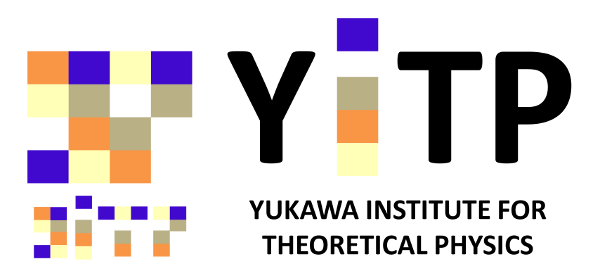iTHEMS-YITP Workshop: Bootstrap, Localization and Holography
Panasonic Auditorium, Yukawa Hall
Yukawa Institute for Theoretical Physics, Kyoto University
Overview
The primary approach to understanding quantum gravity non-perturbatively is through the AdS/CFT correspondence. The issue is that holographic CFTs are not amenable to traditional perturbative methods. Against this backdrop, two significant non-perturbative techniques have been developed to address this: supersymmetric localization and numerical conformal bootstrap. Recently, it has been shown that the observables computed from localization can be input into the bootstrap to improve bounds, potentially leading to non-perturbative solutions to holographic CFTs, and thus quantum gravity. So far, the bootstrap and localization communities have not overlapped much, due to the high technical barrier of entry to each. This conference aims at overcoming this barrier by bringing together experts from each community.
The conference will include the following topics:
- Numerical conformal bootstrap as applied to holographic CFTs.
- Computation of exact observables using supersymmetric localization.
- Exact relations between correlation functions in CFTs and protected observables amenable to localization.
- Analytic bootstrap methods to compute holographic correlators at large N.
- Questions about quantum gravity that can be answered from future bootstrap results.
Speakers
Review talks will be given by
- Joseph Minahan (Uppsala University)
"Supersymmetric Localization"
- Shai M. Chester (Imperial College)
"Numerical Bootstrap and Localization"
- Xinan Zhou (Kavli Institute for Theoretical Sciences)
"Analytic Bootstrap for Holographic Correlators"
Research talks:
- Alessandro Vichi (Pisa University)
- Arthur Lipstein (Durham University)
- Daniele Dorigoni (Durham University)
- Ellis Yuan (Zhejiang University)
- Kazumi Okuyama (Shinshu University)
- Marco Billo (Turin University)
- Maria Nocchi (University of Oxford)
- Ning Su (Caltech)
- Nikolay Gromov (King’s College London)
- Paul Heslop (Durham University)
- Pietro Ferrero (Stony Brook University)
- Ross Dempsey (Princeton University)
- Sanefumi Moriyama (Osaka Metropolitan University)
- Simeon Hellerman (Tokyo University)
- Tobias Hansen (Durham University)
- Tomoki Nosaka (Kavli Institute for Theoretical Sciences)
- Victor Rodriguez (Princeton University)
- Xi Yin (Harvard University)
- Yifan Wang (New York University)
Registration information
There will be a poster session and we encourage students and young postdocs to present a poster.
The registration deadline is
04/01/2024 (Mon).
If you need a visa, you may need to register early.
Acknowledgment
We will be grateful if you acknowledge this workshop in a paper which is initiated or conducted during this workshop. Here are the samples of acknowledgments:
- The authors thank RIKEN Interdisciplinary Theoretical and Mathematical Sciences Program and Yukawa Institute for Theoretical Physics at Kyoto University, where this work was initiated [completed] during "iTHEMS-YITP workshop: Bootstrap, Localization and Holography" (YITP-W-24-03) .
- The authors thank RIKEN Interdisciplinary Theoretical and Mathematical Sciences Program and Yukawa Institute for Theoretical Physics at Kyoto University. Discussions during "iTHEMS-YITP workshop: Bootstrap, Localization and Holography" (YITP-W-24-03) were useful in completing this work.
Organizers
- Luis Fernando Alday (University of Oxford)
- Shai M. Chester (Imperial College)
- Masazumi Honda (RIKEN iTHEMS)
- Yuya Kusuki (Caltech → Kyushu University)
- Yu Nakayama (YITP)
Supporting Organizations
This conference is supported by Yukawa Institute for Theoretical Physics, RIKEN iTHEMS, KAKENHI, and JST SAKIGAKE.




